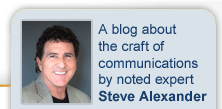The Platinum Rule®… and why it works so well when we apply it
In my last post, I mentioned I’d re-visit the concept of The Platinum Rule®. First, let me give credit where credit’s due, The Platinum Rule® was created by Dr. Tony J. Alessandra and is a registered trademark. His work is pioneering, as it shifts the entire focus from ourselves to others. The Platinum Rule® simply states, “Do Unto Others As THEY Want Done Unto Them.” What it does is force us to think outside ourselves, requiring an empathic connection to the hearts, minds and souls of those folks with whom we’re interacting. It helps us seek to understand, rather than to be understood.
Why does that matter to you? Well, in that simple re-framing, we’re able to step back and examine from a different set of values, perspective and experience. Other than our own. And that’s where the magic begins.
I did a training for city department directors on how to manage difficult people. One jokingly said, “We’d all be fine if we didn’t have to deal with the public!” We all knew it was a form of gallows humor. And we all knew there was some truth to the view and experience that this person shared. Of course, we can get jaundiced by the day-to-day of complaints, criticism and sometimes downright ruthlessness when we’re in those kinds of public interface careers. So, it’s important to stop and ask ourselves, “What does this person need?” “What’s given rise to their complaint or problem?” “Why am I in this unique spot at this specific moment in time?”
With that insight, we begin to lay the foundation for applying The Platinum Rule®: “How can I be of service in helping them get their needs met, in helping them get what they want out of their interaction with me, my company and its product or services, or my organization, or the government service I represent to them?”
Why The Platinum Rule® works so well is because it’s contagious. Don’t take my word for it. Check it out. Apply it. Experiment in your job, at home, with your friends. Watch what happens when you start asking, “What do they need and want; how does their world look from their perspective?” And then follow-up with action, thoughts and words based on a view of how to “do unto them as they want done unto them.”
Take a test drive for the next few days; let me know how it feels. What you think. And how it works. I promise this, no matter what. It will be different.




